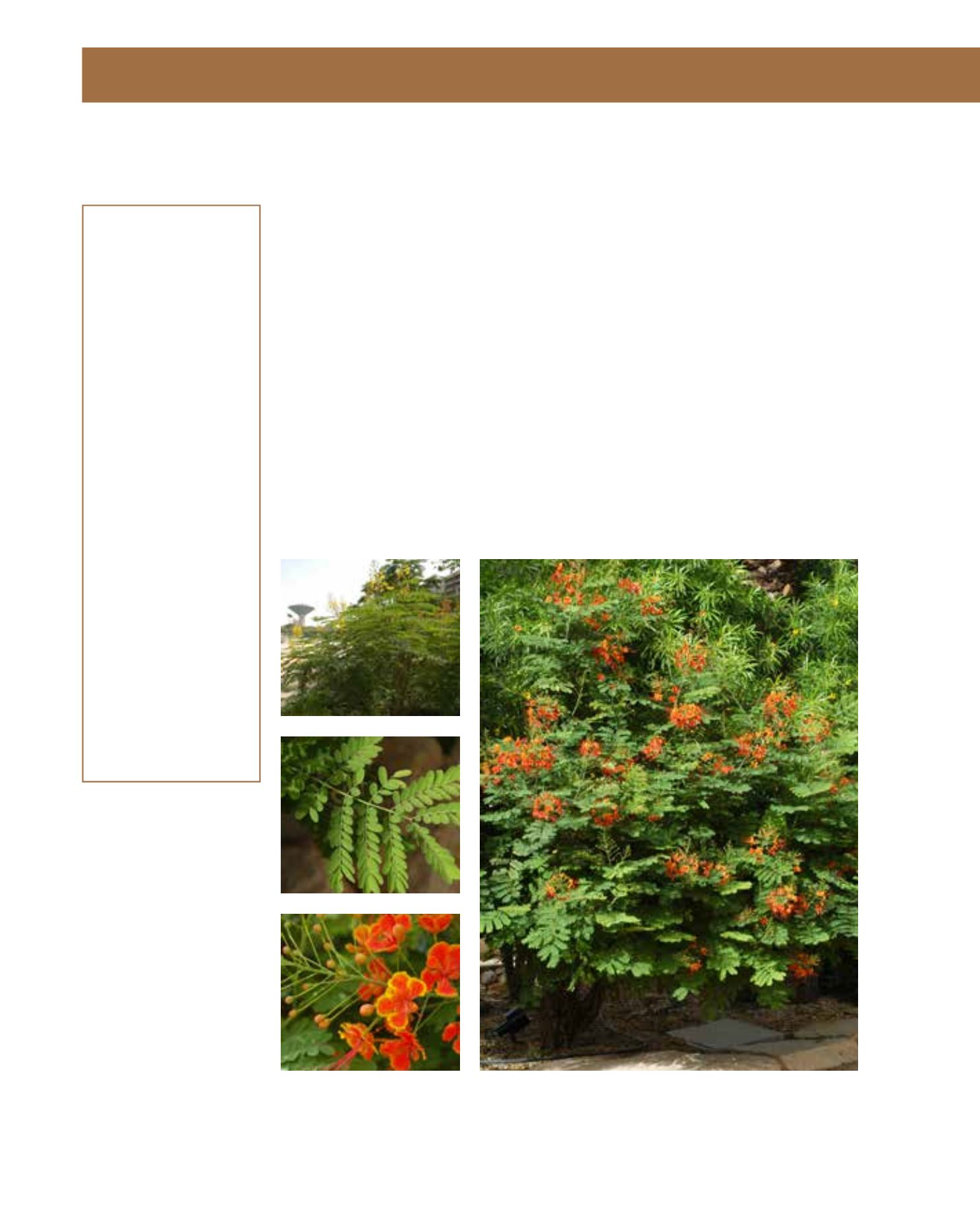

GENERAL
Origin
:
sub-tropical,
tropical
Vigour
:
fairly fast
growing
Humidity
:
semi-arid, semi-
humid, very
humid
Propagation :
sowing and
pricking out,
cuttings
Maintenance :
low
CONDITIONS
Urban climate :
resistant
Dessication :
vulnerable
Stagnant water :
vulnerable
Irrigation
:
high
Salinity/ppm :
very high (5500
ppm)
Hardiness
:
-6°C
SHAPE
Type
:
shrub
Height
:
3 m
Spread
:
3 m
Foliage
:
semi-evergreen
FLOWER
Colour
:
red, orange,
yellow
Size
:
3 cm - 4 cm
Period
:
June - September
FRUIT
Type of fruit :
pod
Fruit size
:
10 cm - 12 cm
Toxicity
:
poisonous
This Mexican native makes a more lush impact than its yellow relative, Caesalpinia gilliesii. Its
relation to the flamboyant tree is obvious and indicated by its synonym, Poinciana pulcherrima.
The shrubs may become tree-like in their native region, but in Arriyadh they remain vase-shaped
shrubs to about 2 metres high. Only a few bushes produce such a display of bright-red flowers
in the hottest summer. Panicles of exotic inflorescences make the Pride of Barbados, or zahrat
al tawose in Arabic, conspicuous over a long period. Brown, hard pods contain poisonous seeds
that easily germinate when scarified. Most result in red, or sometimes in orange flowers. Yellow
varieties such as ‘Phoenix’ also appear occasionally. The foliage is feathery. Protected locations
allow leaves to last throughout the winter, but they usually turn red before they fall. This bush is
tolerant of various soil conditions and even survives drought, but heavy soils may lead to chloro-
sis. Frequent irrigation is welcome during the growth season, but supplemental watering in winter
should be avoided. Light frosts are tolerated. Unsightly growth may be cut to the ground, when
ammonium sulphate is applied in spring to ensure quick recovery. In most cases, hard pruning
still allows flowering within the same year, and makes for a more compact shape. The Pride of
Barbados makes an ideal plant for both gardens and parks with a floral splendour that attracts
from near and far. It is striking as a specimen grown in a container next to a seating area.
75
Caesalpinia pulcherrima,
Caesalpiniaceae
Dwarf Poinciana,
Pride of Barbados, hmar, zahrat al tawose
















